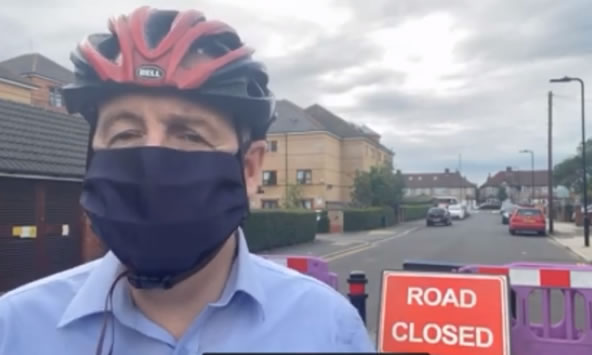Council Boss Blames Government and Residents for High Covid Rate
Ealing has highest level due to test and trace and household mixing says Julian Bell

October 27, 2020
Ealing’s council leader has warned households mixing and the Government’s “failure” over the national test and trace system are to blame for rising coronavirus cases in the borough which are now the highest in London.
Cllr Julian Bell sent a message to residents to follow the new rules after London was ordered into the ‘Tier 2’ category of restrictions. This means residents can no longer see other households indoors, unless they are in a support bubble.
The call made on Friday, October 23, came as the latest weekly figures up until October 18 showed cases were 161.5 per 100,000 of the population in the borough – the joint second-highest rate in London with Hammersmith and Fulham.
However this week Ealing now appears the highest rate in London. Latest figures from Public Health England show its weekly rate in the last seven days up to October 22 as 201.9 per 100,000.
Ealing and Hammersmith and Fulham are the only two authorities to exceed the 200 per 100,000 mark so far in the capital.
Speaking on Friday on the new rules, Cllr Bell said: “I am still of the view that a two to three-week circuit breaker over half-term for the whole country would have been better but this is where we are.
“So just to remind people that households should not be meeting in private homes, or in public indoor spaces, like pubs, bars, or restaurants.
“It is really important for people to follow this rule, in Ealing it is this interaction between households that is spreading the virus.”
He added, “Another key reason for the virus spreading is the failure of the government’s national Test and Trace system even the Prime Minister has now admitted it is not working and it certainly isn’t world-beating.
“I’ve been calling for local authorities using the expertise of our Public Health team to be given both the funding and responsibility for our local test and trace effort to tackle the spread of the virus.”
Ealing’s public health director Anna Bryden told councillors earlier this month that the council was expecting its own local contact tracing system to be set up by the end of October.
At the meeting on October 6, Ms Bryden said the weekly infection rate in the borough stood at just 62 per 100,000 of the population.
On how the local tracing would work, Ms Bryden said: “What we are proposing is, if NHS test and trace hasn’t got in touch with somebody within 48 hours, we are then able to access the data system and we are able to have some local staff who are trained to carry on those efforts for another couple of days.”
Anahita Hossein-Pour - Local Democracy Reporter